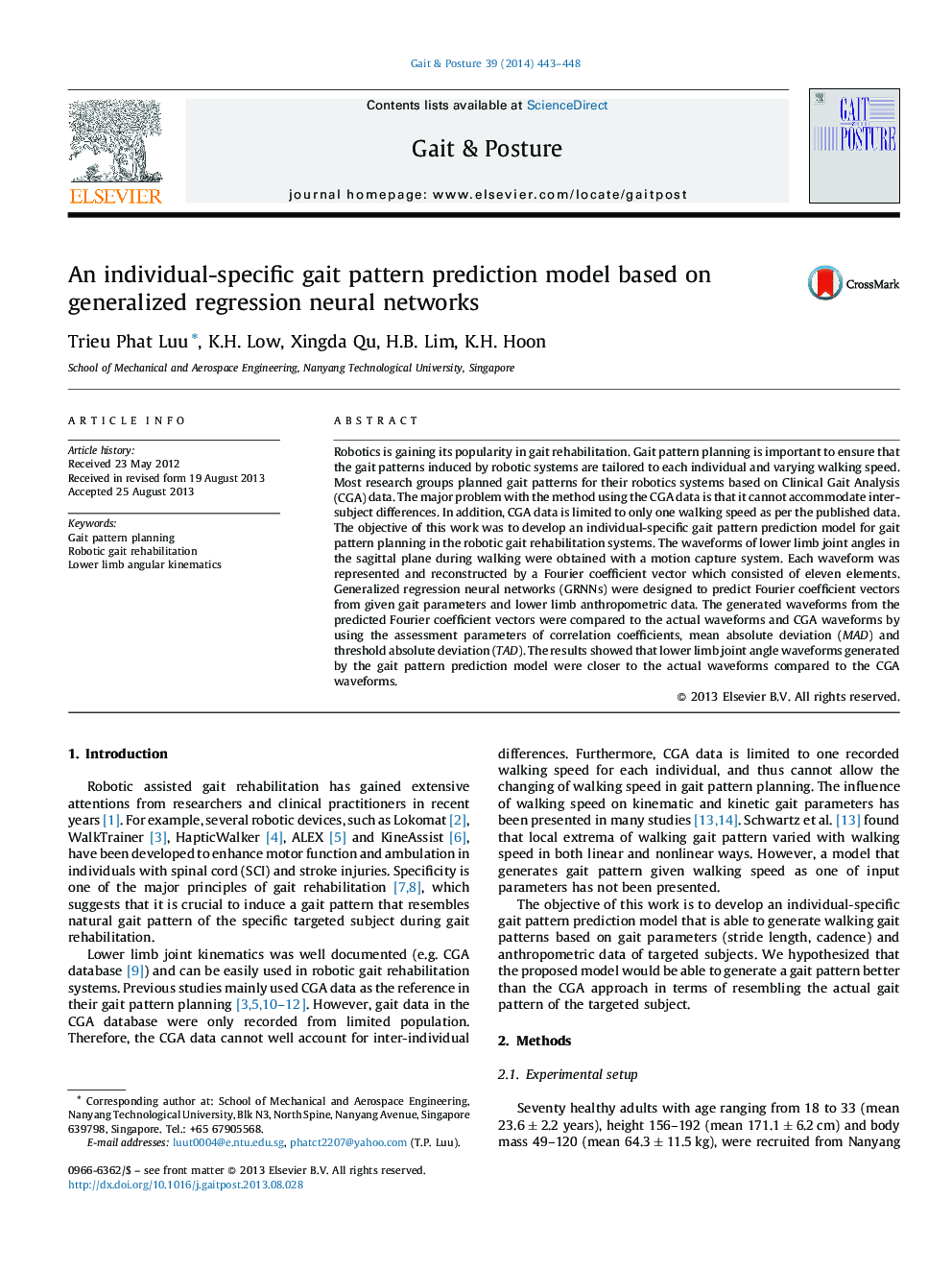| کد مقاله | کد نشریه | سال انتشار | مقاله انگلیسی | نسخه تمام متن |
|---|---|---|---|---|
| 6207078 | 1265653 | 2014 | 6 صفحه PDF | دانلود رایگان |
- An individual-specific gait pattern prediction model for generating lower limb joint angle waveforms was presented.
- We found that the lower limb joint angle waveform can be represented by a Fourier coefficient vector.
- The proposed model is able to plan different gait patterns at different walking speeds.
- The model has been verified on stroke patient using an over-ground gait trainer developed in NTU, Singapore.
Robotics is gaining its popularity in gait rehabilitation. Gait pattern planning is important to ensure that the gait patterns induced by robotic systems are tailored to each individual and varying walking speed. Most research groups planned gait patterns for their robotics systems based on Clinical Gait Analysis (CGA) data. The major problem with the method using the CGA data is that it cannot accommodate inter-subject differences. In addition, CGA data is limited to only one walking speed as per the published data. The objective of this work was to develop an individual-specific gait pattern prediction model for gait pattern planning in the robotic gait rehabilitation systems. The waveforms of lower limb joint angles in the sagittal plane during walking were obtained with a motion capture system. Each waveform was represented and reconstructed by a Fourier coefficient vector which consisted of eleven elements. Generalized regression neural networks (GRNNs) were designed to predict Fourier coefficient vectors from given gait parameters and lower limb anthropometric data. The generated waveforms from the predicted Fourier coefficient vectors were compared to the actual waveforms and CGA waveforms by using the assessment parameters of correlation coefficients, mean absolute deviation (MAD) and threshold absolute deviation (TAD). The results showed that lower limb joint angle waveforms generated by the gait pattern prediction model were closer to the actual waveforms compared to the CGA waveforms.
Journal: Gait & Posture - Volume 39, Issue 1, January 2014, Pages 443-448
